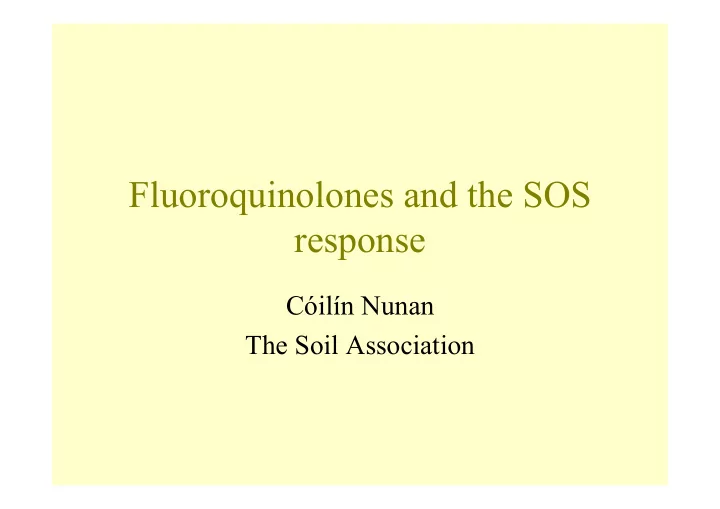

Fluoroquinolones and the SOS response Cóilín Nunan The Soil Association
The SOS response • The bacterial SOS response is an inducible DNA repair system which allows bacteria to survive sudden increases in DNA damage. • The SOS response can activate or enhance the horizontal transfer of antibiotic- resistance genes and of virulence genes.
Fluoroquinolones and SOS response • Antibiotics (eg. the β -lactams, trimethoprim and the quinolones) can induce the SOS response in some bacteria, often at subtherapeutic doses. • The fluoroquinolones induce the SOS response in E-coli O157, in Staphylococcus aureus and in Vibrio cholerae - at subtherapeutic doses for S. aureus and at higher doses for E-coli O157 .
Consequences of SOS induction by the fluoroquinolones • Genes encoding Shiga-toxin production can be transferred from E-coli O157 to other E-coli . • A S. aureus ‘pathogenicity island’ can be horizontally disseminated. As a result, virulence genes are spread. • An ‘Integrating conjugative element’ (ICE) carrying genes which code for resistance to several antibiotics other than fluoroquinolones can be transferred from V. cholerae and E-coli .
Conclusions • SOS induction by the fluoroquinolones may help spread virulence genes. This could contribute to the emergence of new pathogens (eg. Shiga-toxin- producing E. coli , Citrobacter and Enterobacter ). • Exposure to fluoroquinolones can promote resistance to antibiotics to which the bacteria have not been exposed. • The unnecessary or subtherapeutic use of fluoroquinolones should be avoided.
Recommend
More recommend